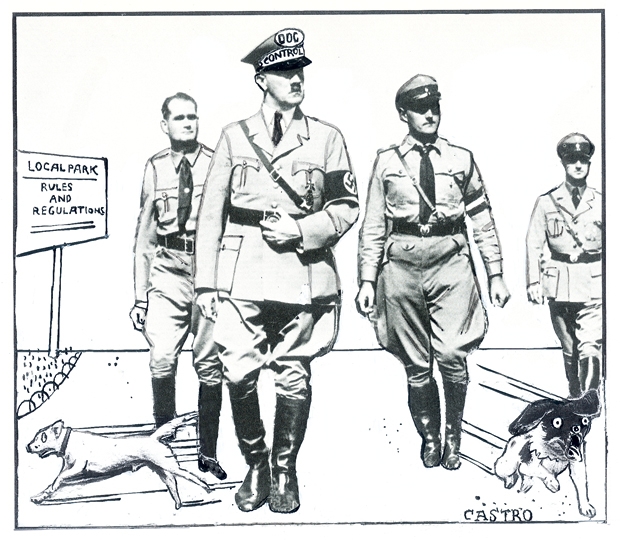[audioplayer src=”http://traffic.libsyn.com/spectator/TheViewFrom22_13_March_2014_v4.mp3″ title=”Josie Appleton and Camilla Swift discuss the rise of the dog police” startat=1509]
Listen
[/audioplayer]‘Be careful!’ shouted a woman on the North Wales beach. ‘The dog police are back!’ Using her walking stick to help her, Lynne stumbled towards the path leading off the beach as fast as she could, followed by her border terrier, Bonnie. But she was too late. The enforcement officer was already there, waiting. Lynne was given a fine and a severe lecture. Her crime? Taking Bonnie for a walk on the beach. She refused to give her name or address, so the officer tried to follow her home to find out.
Lynne isn’t alone. All over the country Britain’s dog owners are being persecuted, thanks to the increasingly tyrannical system of Dog Control Orders. These powers were first introduced in 2005, and no-dog zones have grown apace since then. Councils are under little obligation to consult or alert the public if they want to make an area off limits to our four-legged friends. A small announcement in a local newspaper is all the notice they need to give. Zealous bureaucrats have taken to issuing Dog Control Orders in places where people have walked their pets for generations. This is particularly irksome for pensioners, many of whom can’t drive or don’t own a car, and who have chosen to live near a public space to take their poodles for a potter only to find that the park, beach, path or whatever has become the subject of a control order. If they complain, the council will point them to the nearest place they can walk their dogs — the problem being that the area is often several miles away. What are the carless pensioners supposed to do?
Dog owners are fighting back.








Comments
Join the debate for just £1 a month
Be part of the conversation with other Spectator readers by getting your first three months for £3.
UNLOCK ACCESS Just £1 a monthAlready a subscriber? Log in